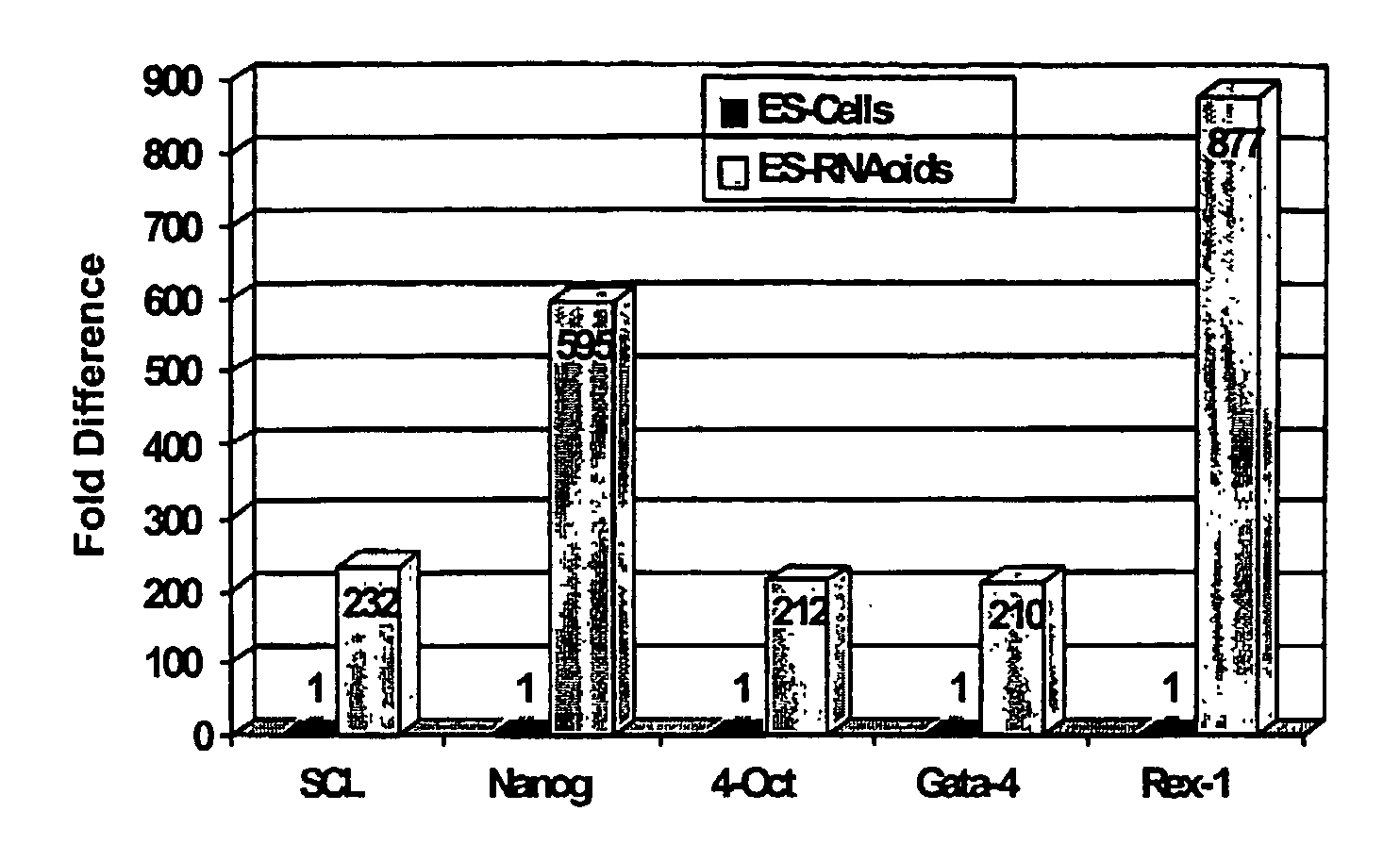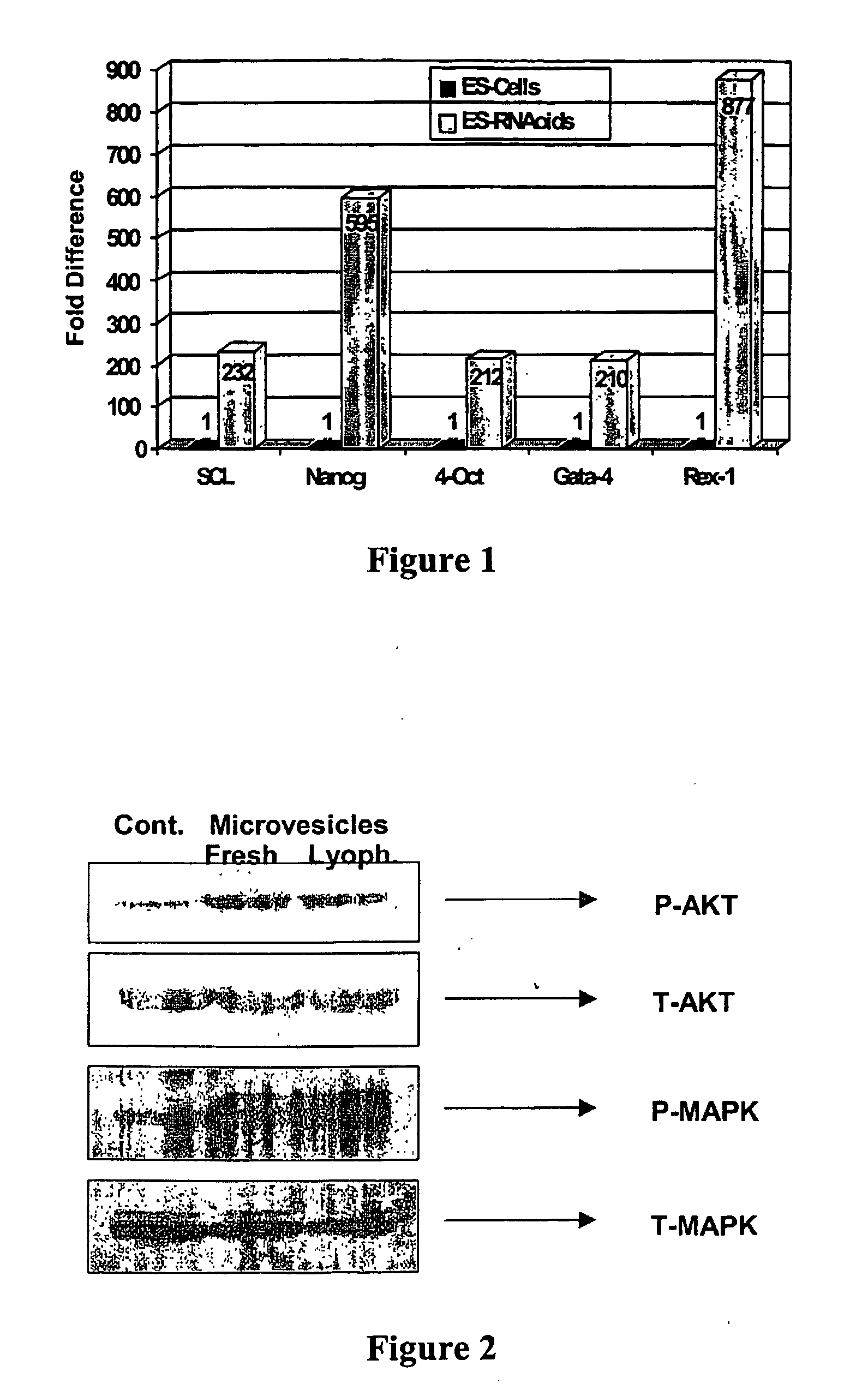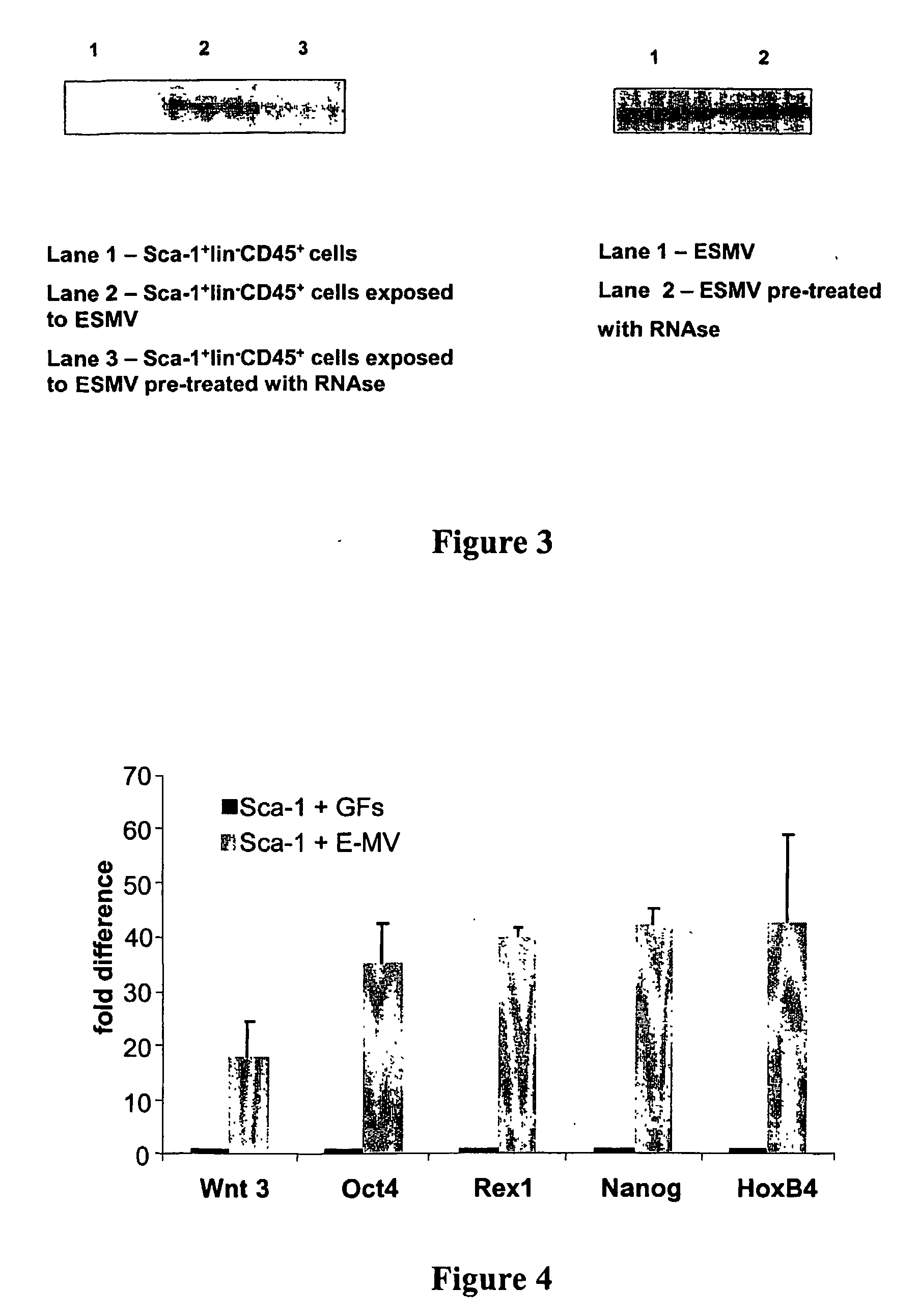Rna - Containing Microvesicles and Methods Therefor
a technology of microvesicles and rna, which is applied in the field of biotechnology, can solve the problems of many largely unexplained problems, suffer from one or more disadvantages, and many of them are difficult to predict biological activity, so as to delay differentiation, increase the number of passages, and increase the susceptibility to viral infection
- Summary
- Abstract
- Description
- Claims
- Application Information
AI Technical Summary
Benefits of technology
Problems solved by technology
Method used
Image
Examples
Embodiment Construction
[0019]The inventors have unexpectedly discovered that microvesicles from nucleated cells and / or from non-nucleated cells can be employed to modify recipient cells in a predetermined manner. Most typically, such modification is at least in part mediated by nucleic acids, and particularly RNA contained in the microvesicles, which was heretofore not recognized. Exemplary Scheme 1 below depicts the general concept contemplated herein:
[0020]The inventors still further discovered that RNA-containing microvesicles may also be employed in numerous diagnostic and therapeutic applications. In such instances, it should be recognized that the specific RNA content of the microvesicle will determine the diagnosis and / or the therapeutic use.
[0021]The term “microvesicle” as used herein refers to a membranaceus particle having a diameter (or largest dimension where the particle is not spheroid) of between about 10 nm to about 5000 nm, more typically between 30 nm and 1000 nm, and most typically betw...
PUM
| Property | Measurement | Unit |
|---|---|---|
| diameter | aaaaa | aaaaa |
| diameter | aaaaa | aaaaa |
| diameter | aaaaa | aaaaa |
Abstract
Description
Claims
Application Information
 Login to View More
Login to View More - R&D
- Intellectual Property
- Life Sciences
- Materials
- Tech Scout
- Unparalleled Data Quality
- Higher Quality Content
- 60% Fewer Hallucinations
Browse by: Latest US Patents, China's latest patents, Technical Efficacy Thesaurus, Application Domain, Technology Topic, Popular Technical Reports.
© 2025 PatSnap. All rights reserved.Legal|Privacy policy|Modern Slavery Act Transparency Statement|Sitemap|About US| Contact US: help@patsnap.com



